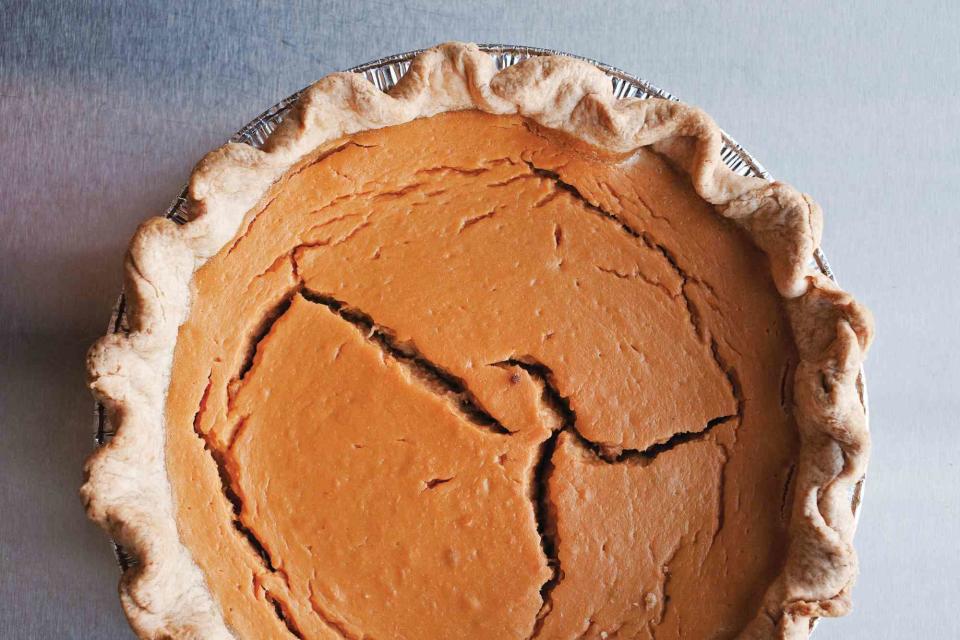Why Did My Pumpkin Pie Crack And How Can I Fix It?
It's okay, cracks happen to everyone.

Pumpkin pies can be tricky. There are seemingly endless ways the classic Thanksgiving dessert can go wrong, from a soggy bottom crust to a curdled custard filling. While many bakers master the art of blind baking the crust and have perfected a silky pumpkin pie filling, their pies still suffer from cracking. Sometimes the cracks are large fissures running straight through the pie or smaller wrinkles that line the edges. And while they don't affect the taste of the pie, cracks aren't all that pretty––and we all love to see an unblemished, smooth pumpkin pie. From baking the pie at the right temperature to properly cooling it, here's how to avoid cracks and what to do if your pie, despite your best efforts, cracks nonetheless.
<strong>Why It Might Have Cracked</strong>
It's likely one of these three reasons, or maybe all of the above.
You overbaked the pie
Because pumpkin pie fillings are a custard, made with a lot of eggs, bakers have to be mindful of not overbaking the pie. Eggs, when cooked, thicken and set the custard, but when overcooked the egg proteins will tighten up quickly and create cracks. The key to perfectly baking a pumpkin pie is to pull it out of the oven before it's actually finished cooking. Let the old adage, "it should jiggle like Jello," be your guide. This means the center of the pie should look under-baked when you pull it out of the oven and it will jiggle in the center, but only slightly. The edge will look puffed and set, but the center should be a little sunken and undercooked as the residual heat will finish cooking it.
You baked the pie on too high of a temperature or rack
This goes hand in hand with overbaking, but if you're baking the pie at too high of a temperature you'll more easily overbake the filling (and likely undercook the crust). Bake the pie on a lower rack to promote more even cooking and use a oven thermometer to ensure you are baking at the temperature the recipe directs, and not any higher (usually around 350℉). You would be surprised by how many home ovens run hot.
You cooled the pie too quickly
Not unlike a cheesecake, pumpkin pies have to be slowly cooled or else they might crack. The thermal shock of a pie going from a hot oven to the fridge can rapidly contract the egg proteins and just like overbaking, this will split the filling. To avoid this, make sure to allow your pie to cool down completely before chilling. Pro tip: when your pie is done baking, shut the oven off and leave the pie inside with the oven door slightly ajar (you can prop it open with a wooden spoon). Let the pie slowly cool in the oven just like a meringue. Do this the night before Thanksgiving so dessert is out of the way and the oven isn't monopolized.
<strong>How To Fix A Crack </strong>
Bad news. Once a pie cracks, you can't "uncrack" it. You can cover it up, however. Whether with swooshes of whipped cream or pie dough scraps you cut into decorative leaf shapes, you can artfully cover them up. Meringue is another great way to cover cracks, or you could even add a streusel topping. No matter how you hide it, once sliced, nobody will know the pie cracked.
For more Southern Living news, make sure to sign up for our newsletter!
Read the original article on Southern Living.
